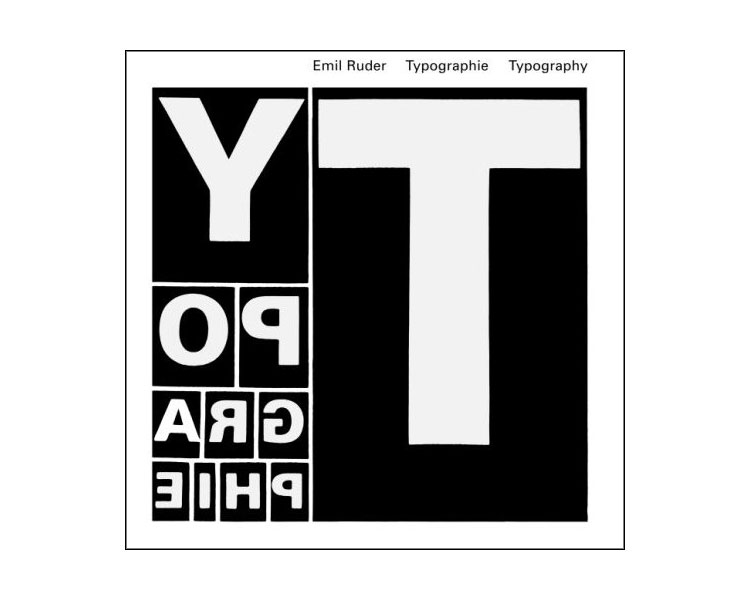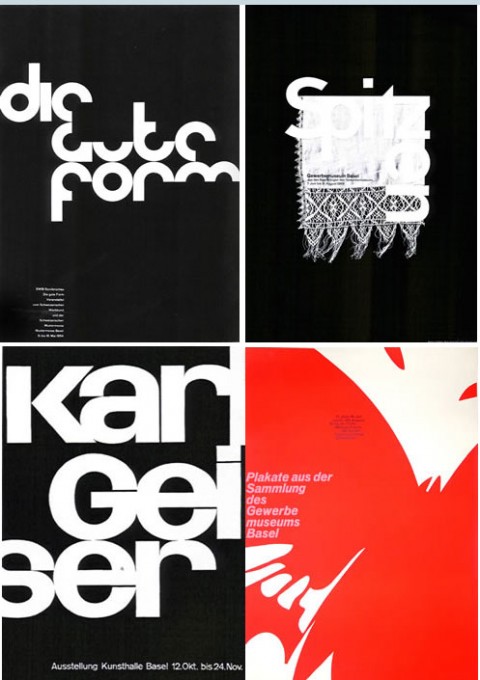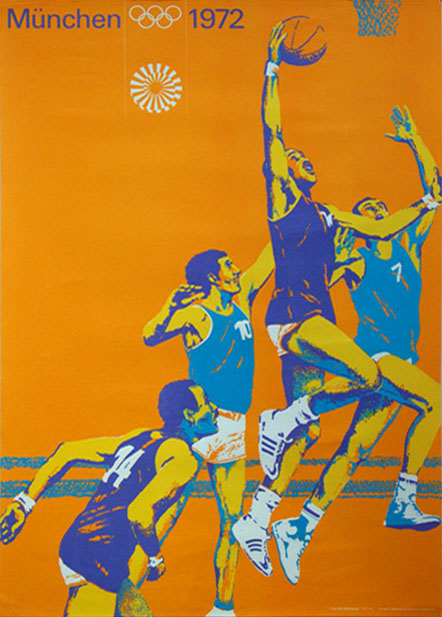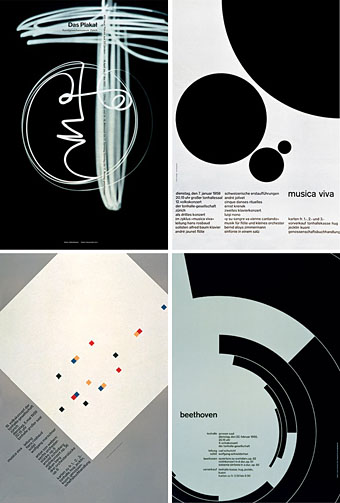The International Typographic Style, or Swiss Style, developed out of the modernist aesthetic of simplified layouts with an emphasis on text, negative space, and objective imagery. Early influences of the style include Jan Tschichold’s Die neue Typographie (1928), and Herbert Matter’s poster and brochure designs for the Swiss National Tourist Office (1934). Swiss Style also adopted Constructivist elements of geometric reduction, photomontage, and a simplified palette. Contributors to the movement aimed to create a unified international style based on clear visual communication.

One of the most important figures of the International Typographic Style was Ernst Keller(1891-1968). He is, in fact, often referred to as the “father of Swiss graphic design.” In 1918, he obtained a teaching position at the Kunstgewerbeschule (School of Arts & Crafts) in Zürich, Switzerland. Here, he taught that design should be adapted to the content and began experimenting with grid systems. Some of his students became largely influential in the International Style movement later, including Armin Hofmann, Emil Ruder, and Josef Müller-Brockmann.


 Armin Hofmann (b. 1920) and Emil Ruder (1914-1970) together founded the Schule fur Gestaltung (School of Design) in Basel, Switzerland in 1947. Hofmann’s compositions were often black and white, gridded, and made use of typography and objective photography to great extent. Ruder was heavily influenced by Bauhaus graphic design, as he was a pupil of Johannes Itten while studying in Zürich, and believed typography should be functional.
Armin Hofmann (b. 1920) and Emil Ruder (1914-1970) together founded the Schule fur Gestaltung (School of Design) in Basel, Switzerland in 1947. Hofmann’s compositions were often black and white, gridded, and made use of typography and objective photography to great extent. Ruder was heavily influenced by Bauhaus graphic design, as he was a pupil of Johannes Itten while studying in Zürich, and believed typography should be functional.




 Josef Müller-Brockmann (1914-1996) was a key figure in the evolution of the International Typographic Style. His Tonhalle concert posters early in his career were strictly gridded, limited to the Akzidenz Grotesk typeface, and succeeded in visualizing the musical content being advertised in the posters as a graphic element. In 1957, Müller-Brockmann began teaching graphic design at the Kunstgewerbeschule in Zürich where he had previously studied under Keller, and indeed he took over Keller’s teaching position. He later opened his own design firm, Müller-Brockmann & Co., and was instrumental in propagating the Swiss design aesthetic beyond Switzerland by founding and co-editing the Neue Grafik (New Graphic Design) journal, of which each issue was printed in German, English, and French.
Josef Müller-Brockmann (1914-1996) was a key figure in the evolution of the International Typographic Style. His Tonhalle concert posters early in his career were strictly gridded, limited to the Akzidenz Grotesk typeface, and succeeded in visualizing the musical content being advertised in the posters as a graphic element. In 1957, Müller-Brockmann began teaching graphic design at the Kunstgewerbeschule in Zürich where he had previously studied under Keller, and indeed he took over Keller’s teaching position. He later opened his own design firm, Müller-Brockmann & Co., and was instrumental in propagating the Swiss design aesthetic beyond Switzerland by founding and co-editing the Neue Grafik (New Graphic Design) journal, of which each issue was printed in German, English, and French.


Some of the major components of International Typographic Style include:
— Sans serif typography (primarily Akzidenz Grotesk, Helvetica, and Univers)
— Asymmetrical compositions
— Flush left, ragged right text alignment
— Mathematical grids, often on a tilted axis
— Objective, black and white photography
— Extreme geometric reduction of illustrated images
— Bright, flat areas of color
— Universal symbols
— Sans serif typography (primarily Akzidenz Grotesk, Helvetica, and Univers)
— Asymmetrical compositions
— Flush left, ragged right text alignment
— Mathematical grids, often on a tilted axis
— Objective, black and white photography
— Extreme geometric reduction of illustrated images
— Bright, flat areas of color
— Universal symbols
References : Otl Aicher 1972 Munich Olympics.
[ONLINE] Available at: http://www.1972municholympics.co.uk/.
[Accessed 25 January 2014]
Muller-Brockmann, Josef | Vintage Posters at International Poster Gallery .
[ONLINE] Available at: http://www.internationalposter.com/search-results.aspx?defaultview=browse&title=Muller-Brockmann,%20Josef&artists=450.
[Accessed 25 January 2014].
AIGA | Armin Hofmann . 2014. AIGA | Armin Hofmann .
[ONLINE] Available at: http://www.aiga.org/medalist-arminhofmann/.
[Accessed 25 January 2014].
Armin Hofmann : Design Is History.
[ONLINE] Available at: http://www.designishistory.com/1940/armin-hofmann/.
[Accessed 25 January 2014].
MoMA | The Collection | Ernst Keller (Swiss, 1891–1968).
[ONLINE] Available at: http://www.moma.org/collection/artist.php?artist_id=3041.
[Accessed 25 January 2014].


No comments:
Post a Comment